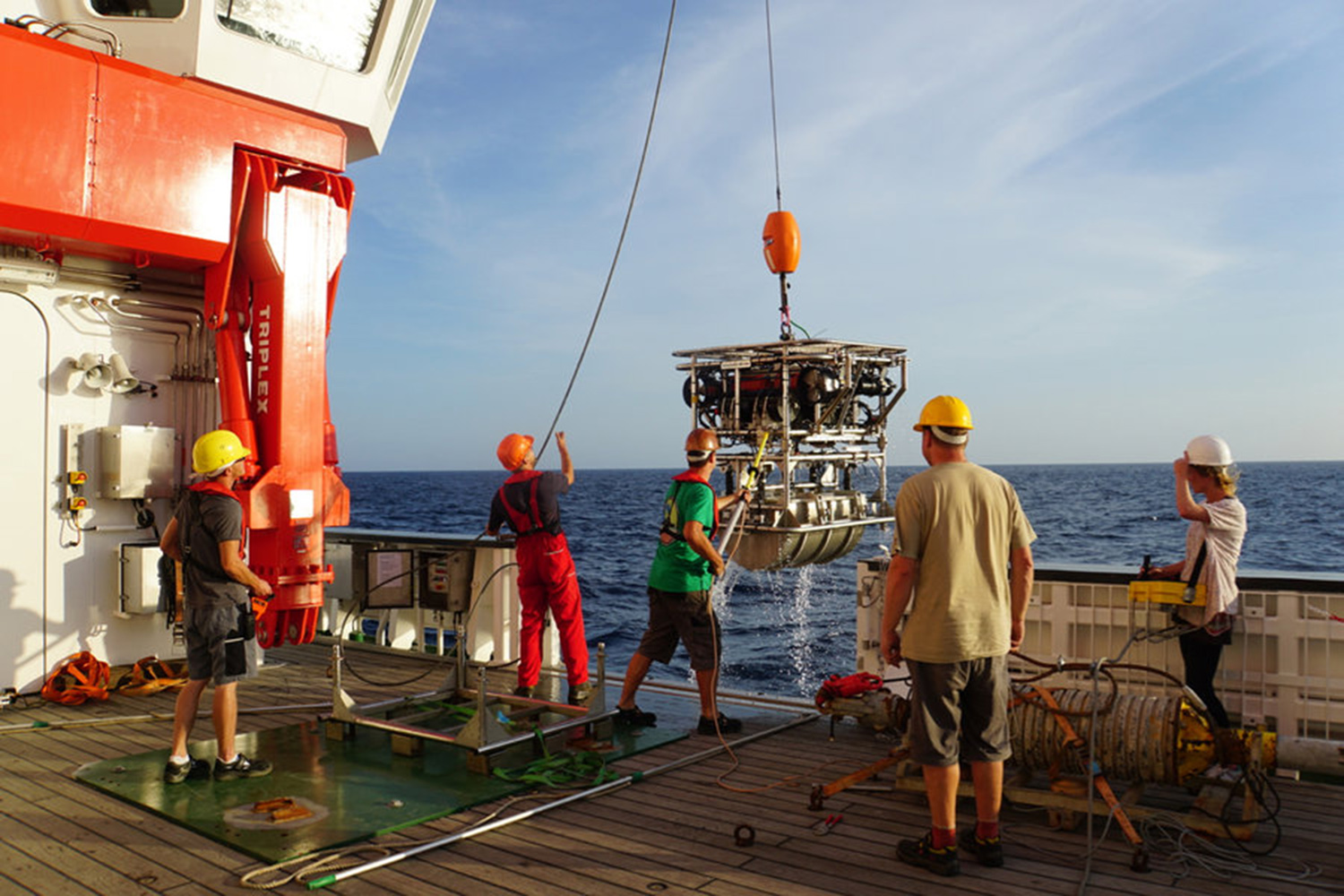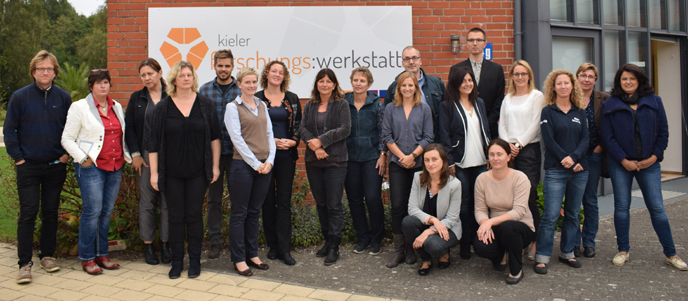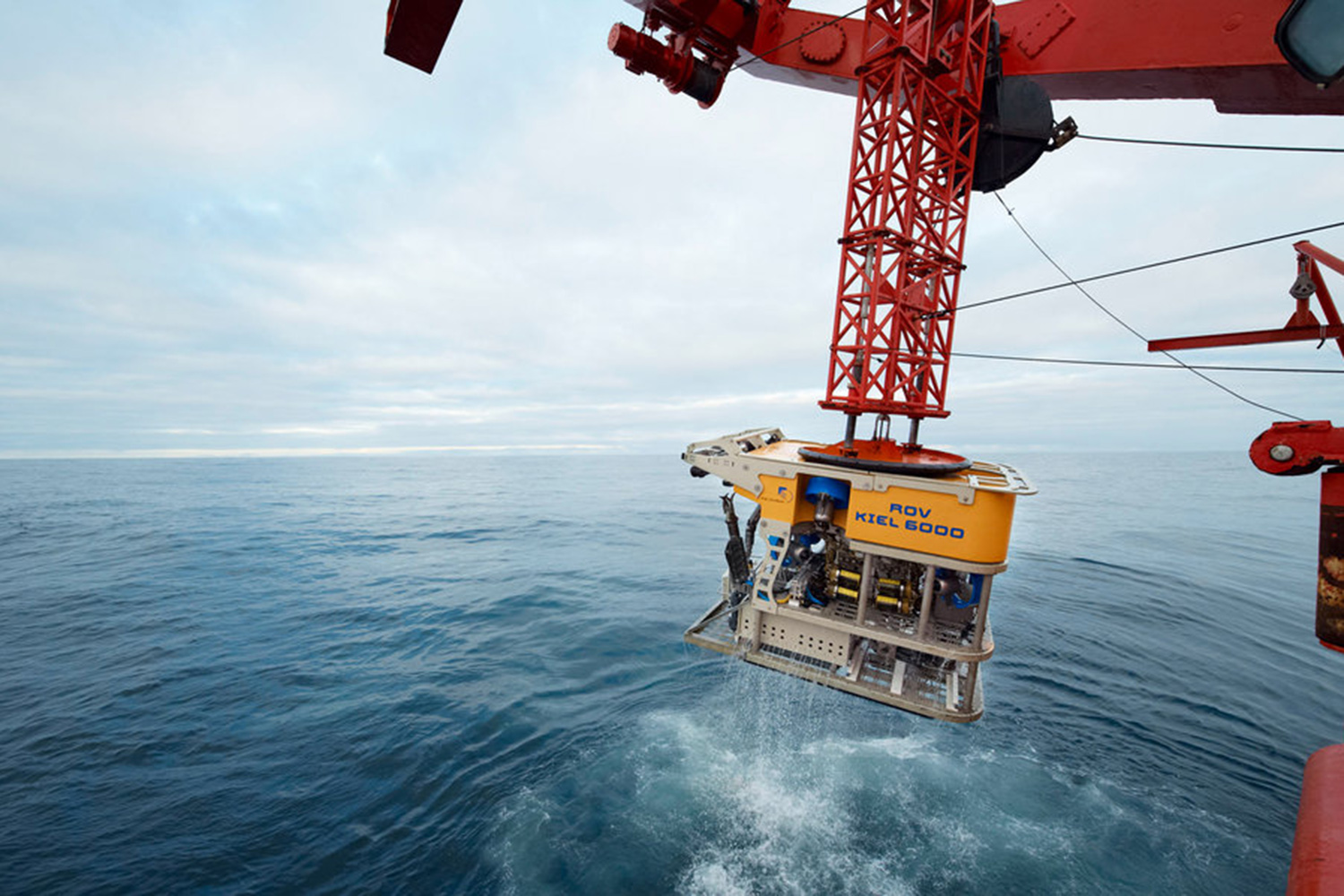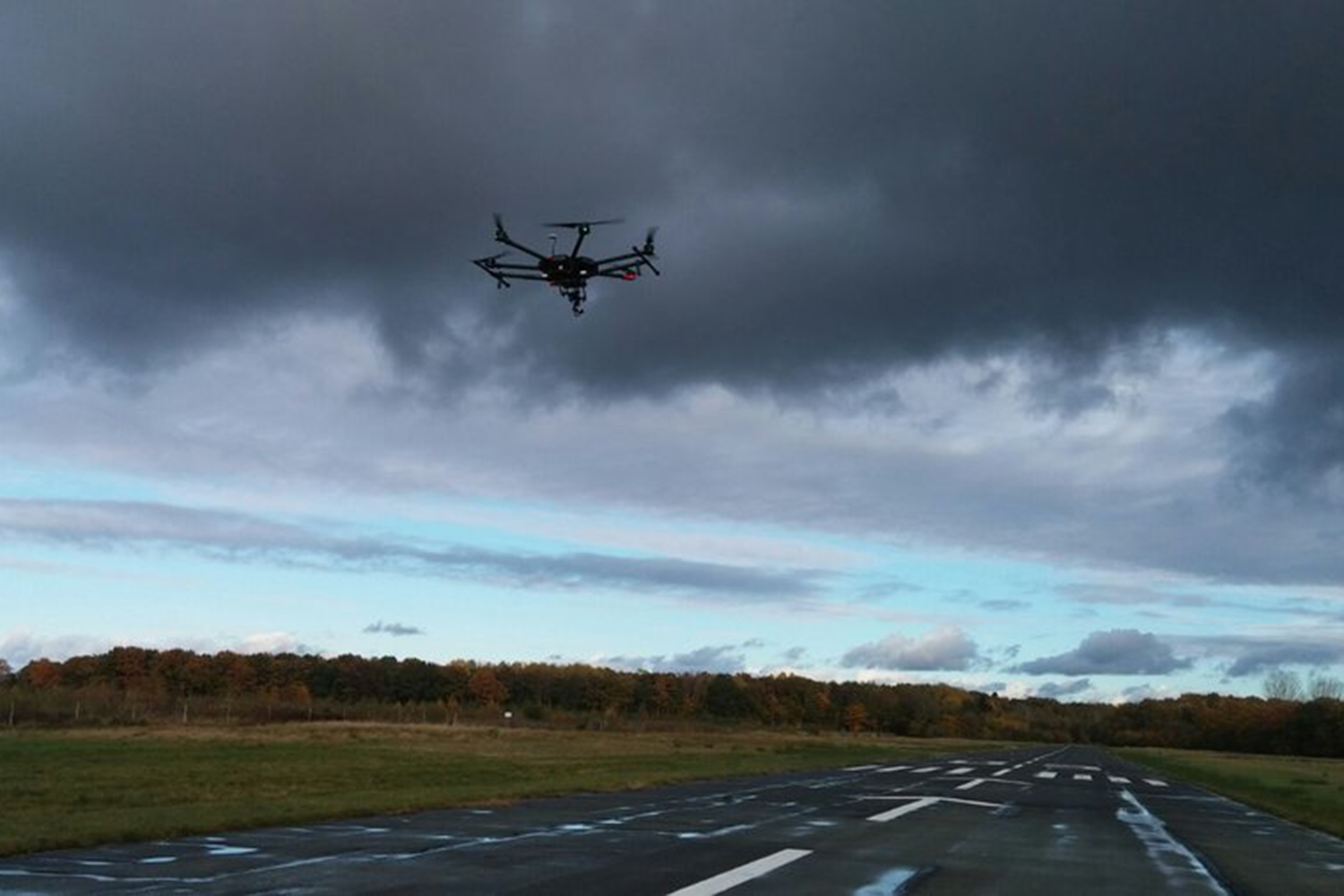The rise of the average global temperature by about two degrees, which could definitely happen by the end of this century, is already having significant consequences for many ecosystems. 55 million years ago, however, at the transition from the geological era of the Paleocene to the Eocene, average temperatures increased up to six degrees within a few thousand years. This Paleocene/ Eocene Temperature Maximum (PETM) caused the global extinction of species, gigantic death zones developed in the oceans. Until today the causes for the rapid climate change of the PETM have still not been clarified.
Researchers from the GEOMAR Helmholtz Centre for Ocean Research Kiel together with colleagues from Bremen, Switzerland, Mexico, Norway, Taiwan and the USA have found evidence that a phase of strong volcanism in the then still significantly narrower Atlantic could have been responsible for the PETM. "In 2015 we found geological structures in the Gulf of California which prove that volcanism which opens an ocean basin is also capable of transporting large amounts of carbon into the atmosphere and in this way can increase the greenhouse effect," explains Prof. Christian Berndt from GEOMAR. He is lead author of the study which was published in the September edition of the international journal Geology.
As the Atlantic was 55 million years ago, the Gulf of California still is an ocean basin which is opening up. Volcanic activity along a rupture zone on the sea floor continuously forms new sea floor and presses the old one to the side. In this process, magma from the active central areas also spreads into the existing basins away from the rupture zone where thick sediment layers can already be found. "These sediments contain a lot of carbon which can be set in motion by the penetrating magma," explains Professor Berndt.
However, until now it was still questionable whether this process would suffice to transport carbon dioxide and methane from the sediment into the atmosphere, where both gases increase the greenhouse effect. Comparable structures from the time of the PETM, which geoscientists have found deep in the sediment off the coast of Norway, have thus far been rather interpreted in such a way that through the described processes only weakly active gas sources have formed on the sea floor.
However, last year during an expedition with the German research ship SONNE in the Gulf of California, the team discovered hydrothermal sources which can be ascribed to exactly these processes. In form and structure, they resemble the 55 million year old structures off the coast of Norway. "The sources which we found are however very active and transport methane and water enriched with CO2 under high pressure several hundred meters up into the water column. In particular in a young, still shallow ocean, this can be sufficient to transfer the gases into the atmosphere," emphasizes Professor Berndt.
This process would have been even stronger and more widespread in the Atlantic 55 million years ago than today in the Gulf of California. "There were two big volcanic hotspots along the rift valley in the Atlantic; moreover, the rift valley is clearly longer than in the Gulf of California. In this way, the magmatic activities definitely would have had the potential to contribute to a massive warming of the Earth," adds the geophysicist.
The results are just as important for the evaluation of current global warming caused by humans. "Only if we understand natural climate fluctuations, their causes and impacts well, can we also assess the possible consequences and risks of the current climate change", says Berndt.
Original work:
Berndt, C., C. Hensen, C. Mortera-Gutierrez, S. Sarkar, S. Geilert, M. Schmidt, V. Liebetrau, R. Kipfer, F. Scholz, M. Doll, S. Muff, J. Karstens, S. Planke, S. Petersen, C. Böttner, W.-C. Chi, M. Moser, R. Behrendt, A. Fiskal, M.A. Lever, C.-C. Su, L. Deng, M.S. Brennwald, and D. Lizarralde (2016): Rifting under steam—How rift magmatism triggers methane venting from sedimentary basins, Geology, 44, 767-770, http://dx.doi.org/10.1130/G38049.1
Links:
www.geomar.de/en The GEOMAR Helmholtz Centre for Ocean Research Kiel
Image material:
Under www.geomar.de/n4720 image material can be downloaded.
Contact:
Jan Steffen (GEOMAR, Communication & Media), Phone: +49 (0)431 600-2811, presse@geomar.de
…



